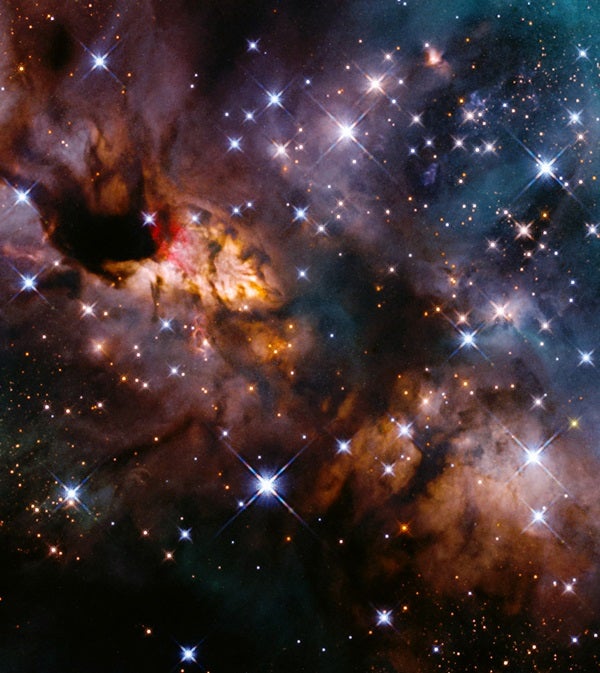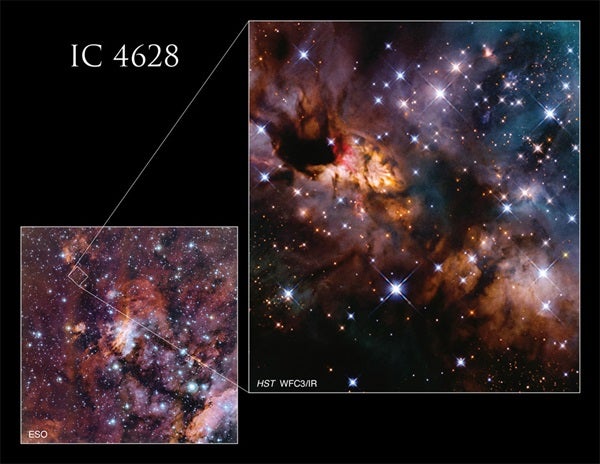Some 6,000 light-years distant lies the Prawn Nebula (IC 4628), a massive stellar nursery within the constellation Scorpius. IC 4628 is an emission nebula, meaning that its gas is energized thanks to radiation from nearby stars. The energy it absorbs is then re-emitted in the form of infrared light. Unfortunately, despite spanning some 250 light-years and taking up the equivalent of four times the size of the Full Moon in our sky — the human eye can’t detect this type of light, rendering the nebula all but invisible to our sight.
Fortunately, the Hubble Space Telescope’s Wide Field Camera 3 can pick up on this glow, giving astronomers the opportunity to peer into the deep cosmic sea to study objects like the Prawn Nebula. Hubble looked at the nebula as part of its survey of massive- and intermediate-size protostars, or newly hatched stars, capturing just a small portion of the larger structure in this image.











